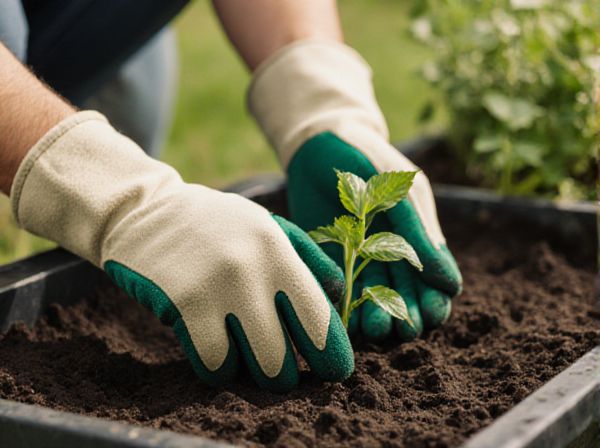
Sequential planting vs simultaneous planting Illustration
Sequential planting involves sowing crops or plants at different times to extend harvest periods and optimize space, while simultaneous planting places all seeds or plants at once for a uniform growth cycle. Companion planting benefits both methods by promoting pest control, enhancing nutrient uptake, and improving overall yield through strategic plant pairings. Choosing between sequential and simultaneous planting depends on specific garden goals, climate conditions, and plant compatibility to maximize productivity and health.
Table of Comparison
| Planting Method | Description | Advantages | Disadvantages |
|---|---|---|---|
| Sequential Planting | Planting crops one after another in intervals. |
|
|
| Simultaneous Planting | Planting multiple crops at the same time. |
|
|
Understanding Sequential Planting in Gardening
Sequential planting in gardening involves sowing crops at staggered intervals, optimizing space and extending harvest periods to ensure continuous yield. This method enhances soil fertility management and pest control by allowing more precise crop rotation and reduced plant competition. Understanding the timing and growth cycles of companion plants is crucial for maximizing benefits and improving overall garden productivity.
What Is Simultaneous Planting?
Simultaneous planting involves sowing different crops or varieties at the same time in a shared space to maximize resource use and improve companion planting benefits such as pest control and soil health. This approach contrasts with sequential planting, where crops are planted at staggered intervals to extend harvest periods or optimize growth conditions. Implementing simultaneous planting enhances biodiversity within the garden and promotes synergistic interactions among plants, leading to increased productivity and ecological balance.
Key Differences Between Sequential and Simultaneous Planting
Sequential planting involves sowing crops at different times to extend harvest periods and optimize space, while simultaneous planting places all seeds at once for uniform growth and easier management. Sequential planting enhances pest and disease control by disrupting pest life cycles, whereas simultaneous planting benefits from synchronized maturation, facilitating bulk harvesting and streamlined labor. Yield consistency varies as sequential planting can spread risk and improve resource use, contrasting with simultaneous planting's potential for uniform crop quality but increased vulnerability to environmental stresses.
Pros and Cons of Sequential Planting
Sequential planting maximizes garden space by staggering crop growth, enabling continuous harvest and reducing pest buildup due to varied plant maturity. This method promotes soil health by alternating nutrient demands and can extend the growing season through progressive sowing. However, sequential planting requires careful timing and management, increasing labor intensity and potentially complicating irrigation and maintenance schedules.
Advantages and Disadvantages of Simultaneous Planting
Simultaneous planting promotes uniform crop development and efficient use of resources such as water, sunlight, and nutrients, leading to easier management and synchronized harvesting. However, it increases vulnerability to pests, diseases, and adverse weather events, as all plants are at the same growth stage. This method may also result in intense competition for nutrients, potentially reducing overall yield compared to sequential planting.
Best Crops for Sequential Planting
Sequential planting maximizes garden yield by staggering crop growth cycles, allowing continuous harvest throughout the season. Best crops for sequential planting include fast-maturing vegetables like lettuce, radishes, and spinach, which can be followed by slower-growing plants such as tomatoes, peppers, or beans. This method enhances soil nutrient use, reduces pest buildup, and ensures a steady supply of fresh produce.
Ideal Scenarios for Simultaneous Planting
Simultaneous planting is ideal in scenarios where crops have similar growth requirements and complementary nutrient needs, enabling efficient use of space and resources. This method optimizes pest control by confusing pests and reducing their spread across uniform planting times. It works best for fast-growing crops with short harvest cycles, allowing synchronized harvesting and timely succession planting.
Maximizing Yield: Choosing the Right Planting Method
Sequential planting extends harvest periods by staggering crop maturity, increasing overall yield through continuous production cycles. Simultaneous planting offers the advantage of uniform growth and easier management, ideal for crops with similar nutrient and water requirements. Careful selection based on crop compatibility and market demand ensures maximizing yield in companion planting systems.
Practical Tips for Implementing Each Planting Strategy
Sequential planting improves garden productivity by staggering plantings to extend harvest periods, ideal for fast-growing crops like lettuce or radishes; space beds efficiently and plan a planting calendar to avoid overcrowding. Simultaneous planting maximizes initial yield and simplifies maintenance by sowing all crops at once, suitable for crops with similar growth cycles such as beans and corn; ensure soil fertility and irrigation meet the needs of all plants. Use crop rotation and intercropping principles to enhance soil health and reduce pests, adapting strategies to seasonal and climatic conditions for optimal results.
Common Mistakes to Avoid in Sequential and Simultaneous Planting
Common mistakes in sequential planting include neglecting proper timing between crops, which can lead to nutrient depletion or pest buildup. In simultaneous planting, overcrowding often reduces airflow and sunlight, increasing disease risk and stunting growth. Both methods require careful soil management and crop selection to optimize companion planting benefits and avoid yield loss.
Sequential planting vs simultaneous planting Infographic

 gardendif.com
gardendif.com